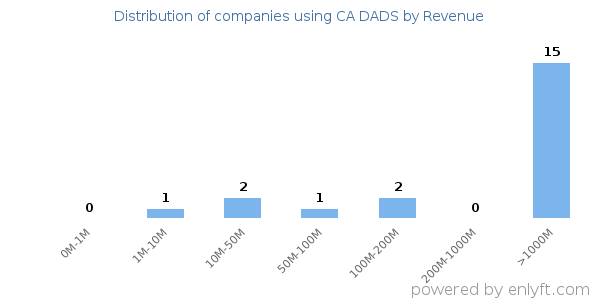Companies using CA DADS
We have data on 20 companies that use CA DADS. The companies using CA DADS are most often found in United States and in the Information Technology and Services industry. CA DADS is most often used by companies with >10000 employees and >1000M dollars in revenue. Our data for CA DADS usage goes back as far as 9 years and 4 months.
Who uses CA DADS?
| Company | HP Development Company, L.P. |
| Website | hp.com |
| Country | United States |
| Revenue | >1000M |
| Company Size | >10000 |
| Company | Tata Consultancy Services Ltd |
| Website | tcs.com |
| Country | India |
| Revenue | >1000M |
| Company Size | >10000 |
| Company | Public Service Enterprise Group Inc |
| Website | pseg.com |
| Country | United States |
| Revenue | >1000M |
| Company Size | >10000 |
| Company | Walgreen Co |
| Website | walgreens.com |
| Country | United States |
| Revenue | >1000M |
| Company Size | >10000 |
| Company | Atos SE |
| Website | atos.net |
| Country | France |
| Revenue | >1000M |
| Company Size | >10000 |
| Company | Website | Country | Revenue | Company Size |
|---|---|---|---|---|
| HP Development Company, L.P. | hp.com | United States | >1000M | >10000 |
| Tata Consultancy Services Ltd | tcs.com | India | >1000M | >10000 |
| Public Service Enterprise Group Inc | pseg.com | United States | >1000M | >10000 |
| Walgreen Co | walgreens.com | United States | >1000M | >10000 |
| Atos SE | atos.net | France | >1000M | >10000 |
Target CA DADS customers to accomplish your sales and marketing goals.
CA DADS Market Share and Competitors in IT Management Software
We use the best indexing techniques combined with advanced data science to monitor the market share of over 15,000 technology products, including IT Management Software. By scanning billions of public documents, we are able to collect deep insights on every company, with over 100 data fields per company at an average. In the IT Management Software category, CA DADS has a market share of about 0.1%. Other major and competing products in this category include:
IT Management Software
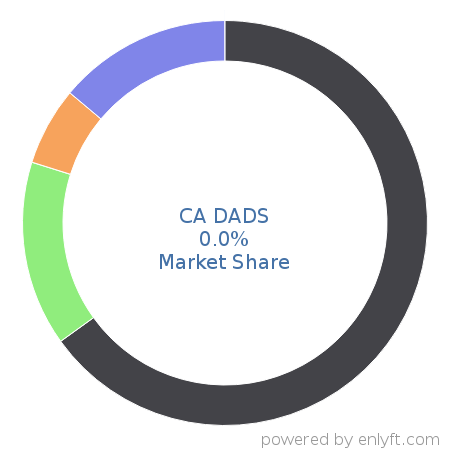

What is CA DADS?
CA DADS Plus for CICS (CA DADS Plus) provides a comprehensive set of CICS and batch functions for dynamically managing CICS resources, including files, IMS databases, transient data queues, DFHRPL load libraries, programs and transactions and RPL load libraries and modules.
Top Industries that use CA DADS
Looking at CA DADS customers by industry, we find that Information Technology and Services (30%), Financial Services (5%) and Banking (5%) are the largest segments.
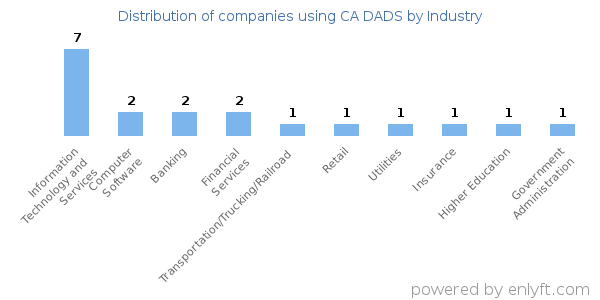
Top Countries that use CA DADS
61% of CA DADS customers are in United States and 6% are in Canada.
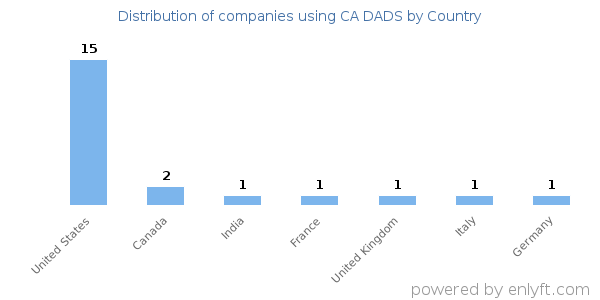
Distribution of companies that use CA DADS based on company size (Employees)
Of all the customers that are using CA DADS, a majority (67%) are large (>1000 employees), 1% are small (<50 employees) and 12% are medium-sized.
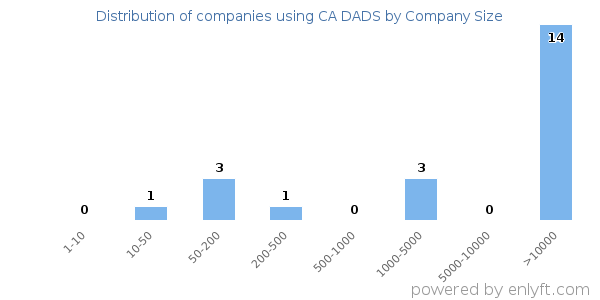
Distribution of companies that use CA DADS based on company size (Revenue)
Of all the customers that are using CA DADS, a majority (61%) are large (>$1000M), 6% are small (<$50M) and 0% are medium-sized.
